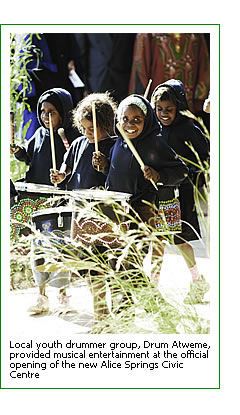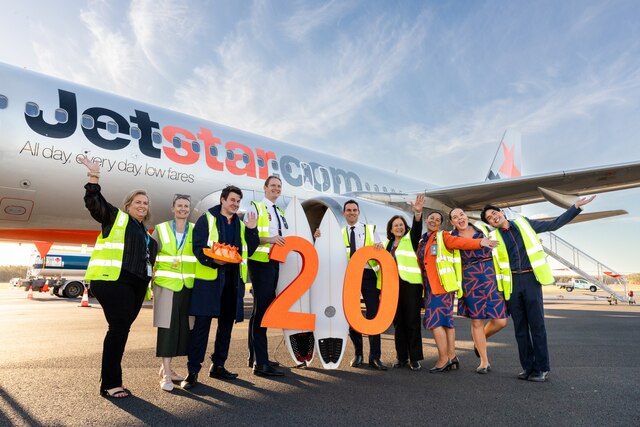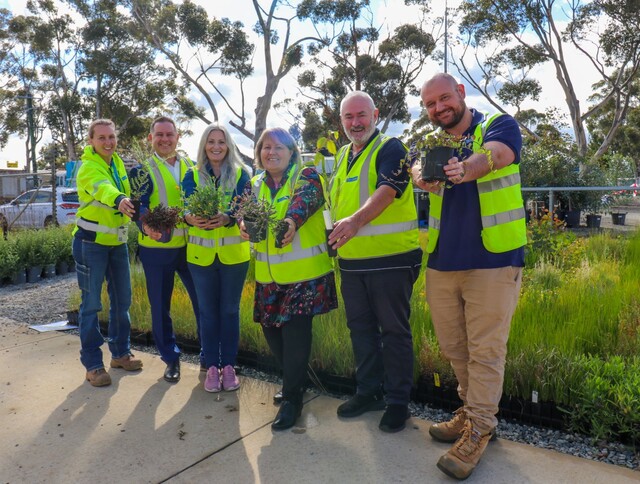After years in the planning, the Alice Springs Town Council $10.4M Civic Centre Redevelopment Project is finally complete. The official opening was held on Saturday 1 July 2006 to coincide with Council’s 35th birthday. The event involved the whole community with an estimated 500 residents and visitors turning out to enjoy the festivities.
The day included a Citizenship Ceremony, the official naming ceremony of the Andy McNeill Room and speeches from the Mayor, Aldermen and other public figures. There were tours of the new building, activities for children held in the library and a continuous BBQ and birthday cake.
“The public can expect to see a Civic Centre which will cater for the long term future of Local Government in Alice Springs,” said Council’s CEO, Rex Mooney. “The Civic Centre is an investment for the community, and in 13 short years, the building will be completely debt free.”
A first of its kind in Australia, Rex Mooney said that all of the innovations incorporated in the design may be found elsewhere, but not combined as they are in this Civic Centre.
In the International Year of Desert and Desertification, the new centre will highlight Alice Springs both on the national and international stage.
“The Mayor and Aldermen are totally committed to the progress and sustainability of Alice Springs and its vibrant and unique environment for the long term,” Rex Mooney said.
Planning and construction
The Alice Springs Civic Centre Redevelopment Project commenced in October 2004. The new building has a high commitment to the environment with many ‘green’ features incorporated into the design to reduce energy consumption.
Stage one of a two stage process, including the customer service area and administration building, was completed in January 2006. Stage two of the development saw the addition of an executive wing and community function facility.
Implementation
A design stage involved value management workshops with staff to identify operational requirements along with extensive community consultation. One of the main aims was to use sustainable energy technologies to demonstrate suitability to a remote desert environment.
Challenges
The biggest challenge for Council was to maintain services from existing buildings, without relocating, avoiding additional disruption and expense. This was done by constructing the works in two stages and relocating technical services staff to temporary accommodation at Council’s Works Depot in Wilkinson Street.
Results and achievements
The design was planned to maximise the energy saving features and has used all available resources from the old building in its construction. An application to the Green Building Council of Australia has been submitted for an appropriate Green Star Rating – an environmental rating tool for office buildings.
Energy efficiency for green star rating
The design of the Civic Centre redevelopment project has attempted to achieve the green star rating, resulting in the following inclusions in the design and documentation.
Geothermal usage
The design uses site untreated bore water at a 25-27°C all year round temperature to assist cooling and heating of the building, occurring in two ways:
- Cooling – bore water was found on the site in sufficient quantity and quality which permitted use of a wet chiller. A wet chiller is about six times more efficient than an air chiller and excess bore water is returned to the groundwater system by an injection bore at approximately 100°C warmer then extracted temperature.
- Heating – bore water is passed through a gas fired heat exchanger to supplement heat energy contained in the bore water. Excess bore water is again returned to the ground water system by an injection bore approximately 10°C cooler then extracted temperature.
Indoor quality
The design uses two ventilation systems. A natural ventilation system operates during summer. It comprises an evaporative air conditioning system in which cool air stored in an underfloor labyrinth during the day is drawn up through the building. This occurs as natural convection currents caused by hot air stored under the sheet roofing during the day are expelled at night to freshen air quality.
Natural lighting
The design promotes the use of natural light and minimal use of artificial lighting by regulating intensity of artificial lighting so that it supplements the level of natural light available to produce the required level of lighting. The use of artificial lighting is controlled by motion detectors so lights are not left on needlessly, while a computerised building management system controls lights required for day and night time security.
Completion of CCP’s Milestone Three
The Alice Springs Town Council is proud to announce completion of Milestone Three in the Cities for Climate Protection (CCP) Australia Campaign. Council is part of a world wide network of efforts to address climate change, as a member of the International Council for Local Environmental Initiatives (ICLEI). Milestone One was completed in 2001 and involved an inventory of greenhouse gas emissions in the base year of 1996, as well as a forecast of expected emissions in 2010. Milestone Two was also awarded in 2001 and involved the setting of reduction goals, which Council set as 20 percent of 1996 levels by 2010.
Alice Springs Town Council has showed its strong commitment to this project by preparing a local action plan to greenhouse gas emissions abatement. Council will work on the implementation of this Local Action Plan, which constitutes Milestone Four, and then monitoring and reporting, to achieve Milestone Five.








